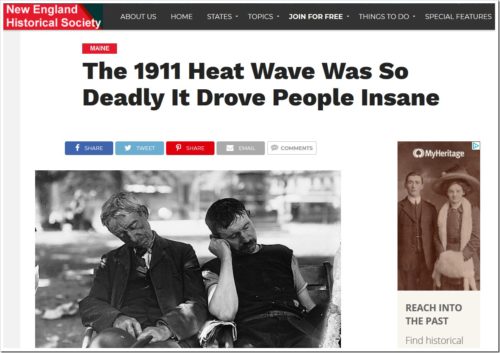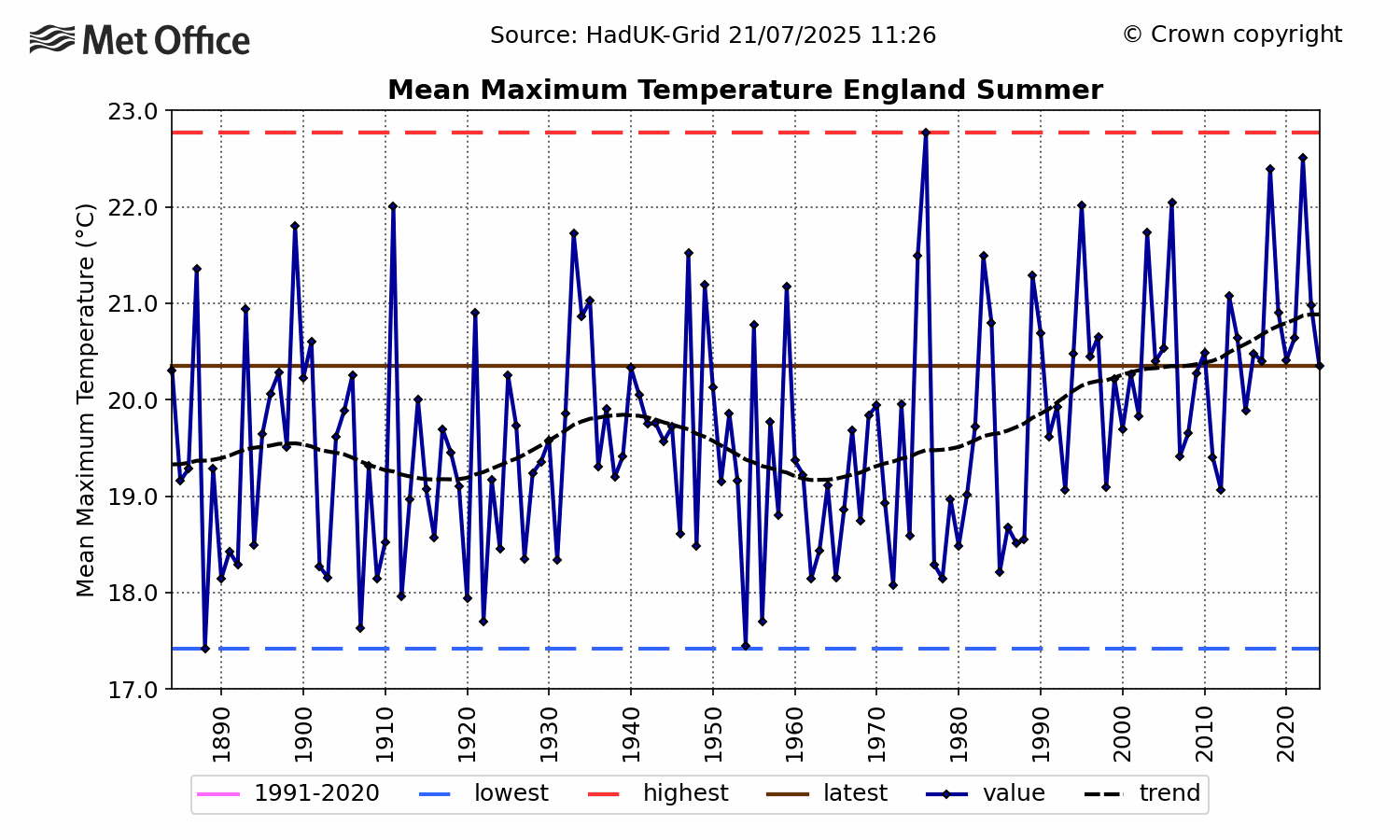By Paul Homewood
We have seen how deadly the 1911 heat wave was in New England. But it was also an exceptionally hot summer in England as well.
Indeed, it was the second hottest behind that infamously hot summer of 1976.
https://www.metoffice.gov.uk/climate/uk/summaries/actualmonthly
The failed Independent carried this account of that summer in an article in 2006:
On 17 July 1911, most of the country was perspiring in 80F (27C) temperatures. It became too hot to work after midday, so the managers of the cotton mills and stone quarries in Clitheroe, Lancashire, decided to shut down in the middle of the afternoon. To compensate for lost hours, the quarrymen’s day would now begin at first light, 4.30 am.
Read the entire article here
The Met Office monthly reports of the time give a flavor of just how hot it was, with temperatures well into the 90s, even in September.
There was even a reading of 100F at Greenwich. These temperatures cannot be directly compared to current measurements, because of the switch from Glaister stands to Stevenson screens. The former tend to add a warm bias of about 1C in summer.
It is, of course, arguable that the effect of UHI since 1911 has more than wiped out such discrepancies.
In any event, whether temperatures in 1911 reached 100F, 98F or 96F, they were considerable higher than anything recorded so far this year, or indeed since 2003.
Read more at Not A Lot Of People Know That




























It’s worse than that, David Lewis. NOAA and NASA and others, are adjusting historical data. They cool the pre 2000 temps and warm the temps after 2000 and create a false hockeystick graph.
Most of the temps are made up, since only USA have a reliable continious, set of temp records from about 1880. At that time there was sparse with data from most of the world, so they make it up.
Talking about USA, having this set of reliable temps, over such long period of time, is a threat to the warmists, because USA shows no warming, the last 100 years, but declining temps, all over.
I’m implying that the temps from most of the world, who had little or no reliable series of temp data, is made up and made very hot.
Why is 93F considered hot enough to drive the Poms mad when they come out to Australia and stand in a cricket ground all day in the sun with the shade temperature exceeding 100F.
History is full of articles and extreme heat in our history. Often this site mentions the 1930’s. This true data significantly undermines the junk science of climate change because 1950 has been chosen as the date when elevated CO2 levels were supposed to start showing their effect. The climate change movement has a simple solution. Just ignore the hot years before 1950.